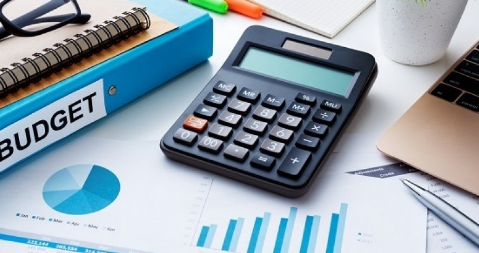Planning for Long-Term Financial Stability

Creating a Plan for Unanticipated Costs
Introduction
Good financial management calls both cautious planning and forward vision. Often disregarded is the need of becoming ready for unanticipated costs. Unexpected expenses can strike at any moment in life medical crises, auto repairs, or sudden employment loss from whatever source. These unanticipated costs without a suitable budget could put a pressure on resources and result debt. The value of budgeting for unanticipated expenses will be discussed in this post together with techniques for building a good budget and advice on keeping ready.
Why It’s Crucially Important to Budget for Unanticipated Costs?
Unexpected costs can upset financial balance and cause stress and worry. Maintaining financial health and peace of mind depends on a budget including a safety net for these circumstances. Those who neglect to save for unanticipated costs could turn to credit cards or high interest loans which starts a debt spiral. Budgeting for these unanticipated expenses helps one stay out of financial hotlines and guarantee long-term stability.
Finding Possible Unexpected Costs
Finding possible expenses beforehand helps one budget for unanticipated charges. Although every unanticipated incident is impossible to forecast, some typical unanticipated costs include:
Medical Emergencies: Unexpected medical expenses result from unexpectedly occurring health problems.
Cars can suddenly break down and call for expensive repairs.
Natural calamities or wear and tear could result in unanticipated house repair costs.
Losing a job can cause a rapid drop in income, which makes it difficult to pay everyday bills.
Understanding these possible costs helps people to budget and distribute money to pay for them as needed.
Building an Emergency Reserve
Budgeting for unanticipated costs depends critically on an emergency reserve. Acting as a financial buffer, this fund offers protection against crises. Three to six month’s worth of living expenses should be saved in an emergency fund according to financial advisers. Like a savings account this fund should be easily reachable so that money may be promptly taken out as needed.
Establishing an emergency fund calls both commitment and discipline. Set away a little bit each month first; then, as your financial condition gets better, progressively raise the commitment. Transferring funds to the emergency fund automatically helps guarantee regular savings.
Setting Savings and Spending Priority
Budgeting for unanticipated costs requires you to give your regular expenses and savings goals top priority. Start by enumerating your fixed expenses that is, utilities, insurance premiums, mortgage or rent payments, etc. List your variable expenses that is, groceries, entertainment and transportation next.
After deducting normal costs, set aside some of your income for long-term savings including your emergency fund and other goals. While working toward other financial goals, giving your savings first priority will help you create a cash cushion for unanticipated needs.
Analyzing and Changing Your Own Budget
Budgeting calls for frequent assessment and changes; it is not a one-time chore. Your budget should reflect the changes in your life situation since they are inevitable. Check your budget either regularly or quarterly to make sure it fits your present financial condition. As necessary to fit any changes in income or expenses, modify your savings and spending targets.
For instance, think about paying off debt or boosting your emergency fund contributions should you get a raise at work. On the other hand, should you have a pay cut or unanticipated expense, modify your budget to eliminate frivolous spending and give critical expenses top priority.
Employing Budgeting Tools and Apps
Many tools and apps abound in the digital era to assist in financial management. Tracking your income and expenses, creating savings goals, and generating alerts for forthcoming invoices helps these tools ease budgeting for unanticipated expenses. Popular budgeting applications include:
Mint provides a complete financial picture including credit score tracking, spending, and savings.
YNAB, or You Need A Budget, emphasizes guiding consumers to spend every dollar in line with proactive planning and saving.
PocketGuard shows your spare income after bills and savings, thereby helping you to control your spending.
By use of these instruments, budgeting can be simplified and tracking of your financial goals made simpler.
Developing Financial Fortitude
Budgeting for unanticipated costs helps create financial resilience rather than only save money. Financial resilience is the capacity to rapidly recover from financial shocks. Creating financial resilience goes beyond simply having an emergency fund to include:
Having several income sources can help to give financial stability during job loss or recession.
Purchasing home, auto, and health insurance will help to guard against unanticipated costs.
Paying off debt helps to liberate money for savings and investments by lessening financial obligations.
Creating financial resilience calls both forward planning and aggressive financial management.
Establishing Long-Term Financial Plans
Although budgeting for unanticipated costs is vital, long-term financial planning is equally important. These can be supporting your child’s school, investing for retirement, or purchasing a house. Planning for these objectives calls for an other budget and savings strategy.
Consider elements including inflation, investment returns, and your present financial condition while developing long-term financial goals. Set aside some of your salary for these objectives; make sure they are reasonable and attainable. To keep on target, routinely review and modify your long-term financial plan.
Techniques for Reducing Expenses
Use cost-cutting techniques to free your budget for unanticipated expenses. Cutting discretionary spending like entertainment or dining out helps to liberate money for savings. To cut monthly costs, also look at negotiating bills for phone or cable services.
Adopting a minimalist lifestyle and emphasizing on necessary purchases helps one to minimize needless expenditure and concentrate on important purchases. This strategy can enable you to create a more strong emergency reserve and cut more expenses.
The Value of Financial Education
Effective budgeting and financial planning depend on a strong foundation in finance. Knowing fundamental financial ideas including credit ratings, interest rates, and investment choices will help you make wise judgments and stay clear of financial mistakes.
To increase your knowledge, think about reading books on personal finance or enrolling in financial literacy classes. To help you create a complete financial strategy, also consult financial experts including accountants or advisers.
Developing a Saving Mindet
Budgeting for unforeseen costs calls for a savings mindset. A savings mindset is one which emphasizes long-term financial objectives, disciplined financial behavior, and ranks saving over consumption.
Establish certain savings targets, monitor your development, and honor achievements to inspire a savings attitude. Create a waiting period before making major purchases to help you also prevent impulse buying.
Finish
A cornerstone of financial planning is budgeting for unanticipated costs. Creating an emergency fund, noting possible expenses, and giving savings top priority will help you guard against financial shocks and foster long-term stability. Important stages in keeping ready are also routinely assessing and changing your budget, applying budgeting methods, and developing financial resilience. Adopting a proactive attitude to budgeting and financial planning will help you to guarantee a safe financial future and bring peace of mind.

2 thoughts on “Planning for Long-Term Financial Stability”